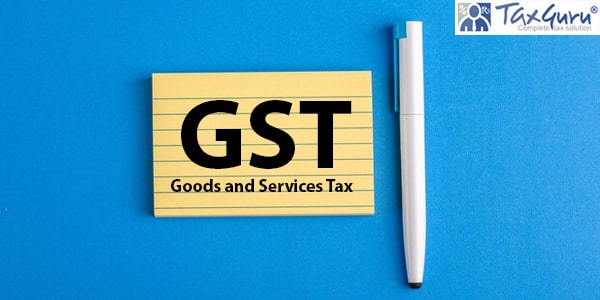As we know that employers use to contribute to the retirement benefit schemes of employees to enable them to maintain a quality life after retirement.
Generally these contribution by employer can be in any one or in combination of following three forms:
1. Contribution to PF (Provident Fund) of the employees (Recognised PF, Unrecognised PF or Statutory Fund)
2. Contribution to NPS (National Pension Scheme) account of the employees
3. Contribution to approved superannuation fund of employees
As of now the tax treatment of the contribution amount and interest thereon is as below:
| Contribution to | During Employment period | At the time of Retirement / Termination | ||
| Employer’s Contribution | Employee’s Contribution | Interest/ Return on Fund | ||
| Recognised Provident Fund | Exempt from tax to the extent of 12% of salary. Any contribution in Excess of 12% of salary is taxable. | Not taxable. Available for Deduction u/s 80C (upto Rs 1.50 Lacs) | Exempt from tax upto 9.50% interest rate. Interest in Excess of 9.50% is taxable. | Generally exempt (s.t certain conditions) |
| Unrecognised Provident Fund | Not Taxable. However whole amount withdrawn at time of retirement / termination is fully taxable. | Not taxable. However NO Deduction u/s 80C | Not Taxable. However whole amount of interest withdrawn at time of retirement / termination is fully taxable. | Whole amount (excluding employees principal contribution) withdrawn at time of retirement / termination is fully taxable. |
| Statutory Provident Fund (for Govt Employees) | Fully Exempt | Not taxable. Available for Deduction u/s 80C (upto Rs 1.50 Lacs) | Fully Exempt | Fully Exempt |
| NPS (National Pension Scheme) | Exempt to the extent of 10% of salary. (14% in case of Central Govt Employees). Any contribution in Excess of 10%/14% of salary is taxable. [Sec 80CCD(2)] | Not taxable. Available for Deduction u/s 80CCD (additional Rs 50,000) | Fully Exempt | 60% of the accumulated corpus withdrawn at the time of retirement is exempt from tax. [Sec 10(12A)]. Balance 40% has to be compulsorily used to purchase annuity. |
| Superannuation fund | Exempt to the extent of Rs 1.50 lac in a FY | Not taxable. Available for Deduction u/s 80C (upto Rs 1.50 Lacs) | Fully Exempt | At time of Retirement 1/3rd (if gratuity is received else 50%) of accumulated amount can be withdrawn without any tax. Any amount in excess of 1/3rd (or 50%) is taxable except if remaining 2/3rd (or 50%) is used to purchase annuity which is taxable as salary in year of receipt. [Sec 10(10A)]Other than Retirement Fully taxable as Income from other sources except specified circumstances u/s 10(13) |
As can be seen from above table that the above 3 exemptions (towards PF, NPS and superannuation fund) is available subject to specified limit (either in % terms or monetary terms).
In Finance bill 2020, it has been proposed that total contribution to these three (3) funds in excess of Rs 7.50 lacs will be taxable in hands of employee as perquisite. Beside it any interest/dividend on these funds attributable to taxable portion of contribution will also be taxable.
The above can be illustrated with the help of following example (For non-Govt Employee):
|
Rs In Lacs |
||||||
| Case | Particulars | Salary +DA | PF | NPS | Superannuation Fund | Total Fund |
| Case 1 | Contribution | 10.00 | 1.200 | 1.000 | 1.500 | 3.700 |
| Taxable | – | – | – | – | ||
| Case 2 | Contribution | 25.00 | 3.000 | 2.500 | 1.500 | 7.000 |
| Taxable | – | – | – | – | ||
| Case 3 | Contribution | 30.00 | 3.600 | 3.000 | 1.500 | 8.100 |
| Taxable | – | – | – | 0.600 | ||
| Case 4 | Contribution | 40.00 | 4.800 | 4.000 | 1.500 | 10.300 |
| Taxable | – | – | – | 2.800 | ||
| Case 5 | Contribution | 20.00 | 4.000 | 3.000 | 1.500 | 8.500 |
| Taxable | 1.600 | 1.000 | – | 3.600 | ||
In case 1 nothing is taxable as all the contribution to these funds are within specified limit and total contribution is also within limit of Rs 7.50 Lacs.
In case 2 also nothing is taxable as all the contribution to these funds are within specified limit and total contribution is also within limit of Rs 7.50 Lacs.
In case 3 Rs 0.60 Lacs is taxable as individual contribution to these fund are within limit, however total contribution is exceeding Rs 7.50 Lacs.
In case 4 Rs 2.80 Lacs is taxable as individual contribution to these fund are within limit, however total contribution is exceeding Rs 7.50 Lacs.
In case 5 Rs 3.60 Lacs is taxable. These are on two accounts. 1) For individual contribution exceeding specified limit (Rs 1.60 + 1.00 = Rs 2.60 lacs) and 2) For overall contribution exceeding Rs 7.50 lacs (Rs 1.00 Lacs)
In the memorandum of Budget 2020 the following reason was given behind introduction of above clause:
“While an employee with low salary income is not able to let employer contribute a large part of his salary to all these three funds, employees with high salary income are able to design their salary package in a manner where a large part of their salary is paid by the employer in these three funds. Thus, this portion of salary does not suffer taxation at any point of time, since Exempt-Exempt-Exempt (EEE) regime is followed for these three funds. Thus, not having a combined upper cap is iniquitous and hence, not desirable.”
The above reason may be true for few employees, however the employees working particularly in PSUs at a very higher grade is definitely going to be affected by the above provisions as these employees can’t design their retirement benefit scheme at their own whim.
Beside it in Sec 17(2)(vii) the bill uses the term of total contribution in excess of Rs 7.50 lacs and not exempted portion of contribution. As a result of which even if individual contribution may be incurring tax (because of contribution in excess of specified amount or %) then also such taxable portion may incur tax twice on account of Rs 7.50 Lacs criteria. This can be explained with the help of following example:
| Particulars | Salary +DA | PF | NPS | Superannuation Fund | Total Fund (Rs In Lacs) |
| Contribution | 20.00 | 4.000 | 3.000 | 2.000 | 9.000 |
| Exempted Portion (12%, 10% and 1.50 lacs) | 2.400 | 2.000 | 1.500 | 5.900 | |
| Taxable due to Individual limit of contribution | 1.600 | 1.000 | 0.500 | 3.100 | |
| Taxable due to combined limit | 1.500 | ||||
| Total Taxable portion | 4.600 |
As can be seen above the overall tax free limit used is Rs 5.90 Lacs then even in the given case the person has to pay tax on additional 1.50 lacs on account of Rs 7.50 lacs criteria. Hence suitable amendment in the given section 17(2)(vii) may be looked into.























Sir, the PSU, SAIL is contributing to a superannuation fund at certain rate since 01.01.2007 @ 50000 to about 2 lakhs per annum. The total accumulation in one case is coming to Rs.12.60 lakhs. Now this entire amount was given to Annuity Provider and we are getting monthly annuity. Now, employer has deducted Rs.7.5 lakhs and deducted TDS for the balance and also uploaded in 26AS. I feel the entire amount is fully exempted. Now how to claim refund and under what Section? Please help.
Is there any change in the Act as of now ?
Or still the conflict of double taxing is there ?